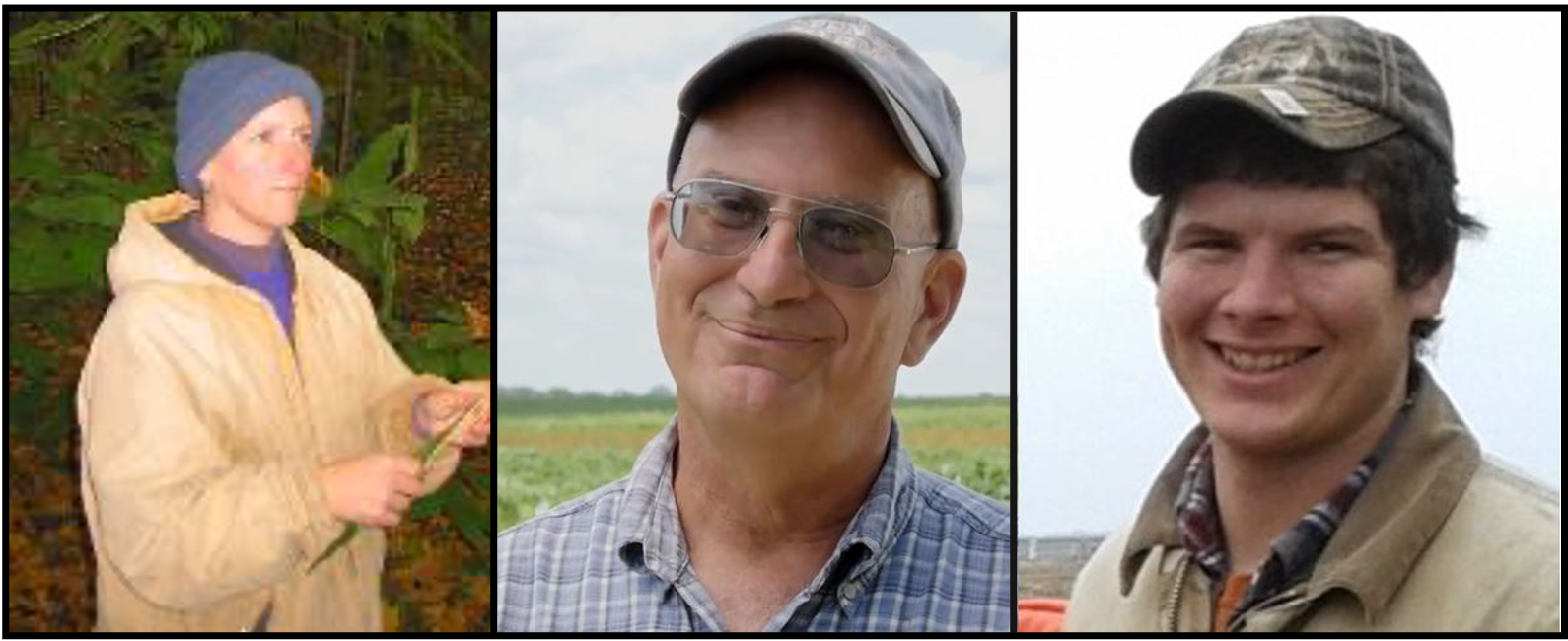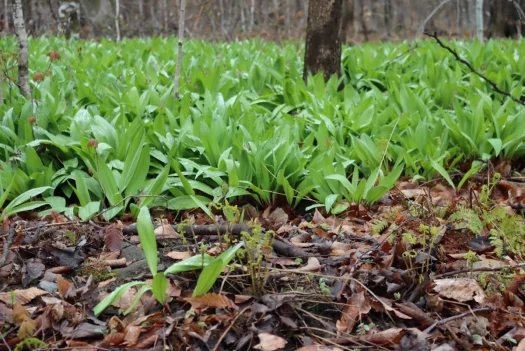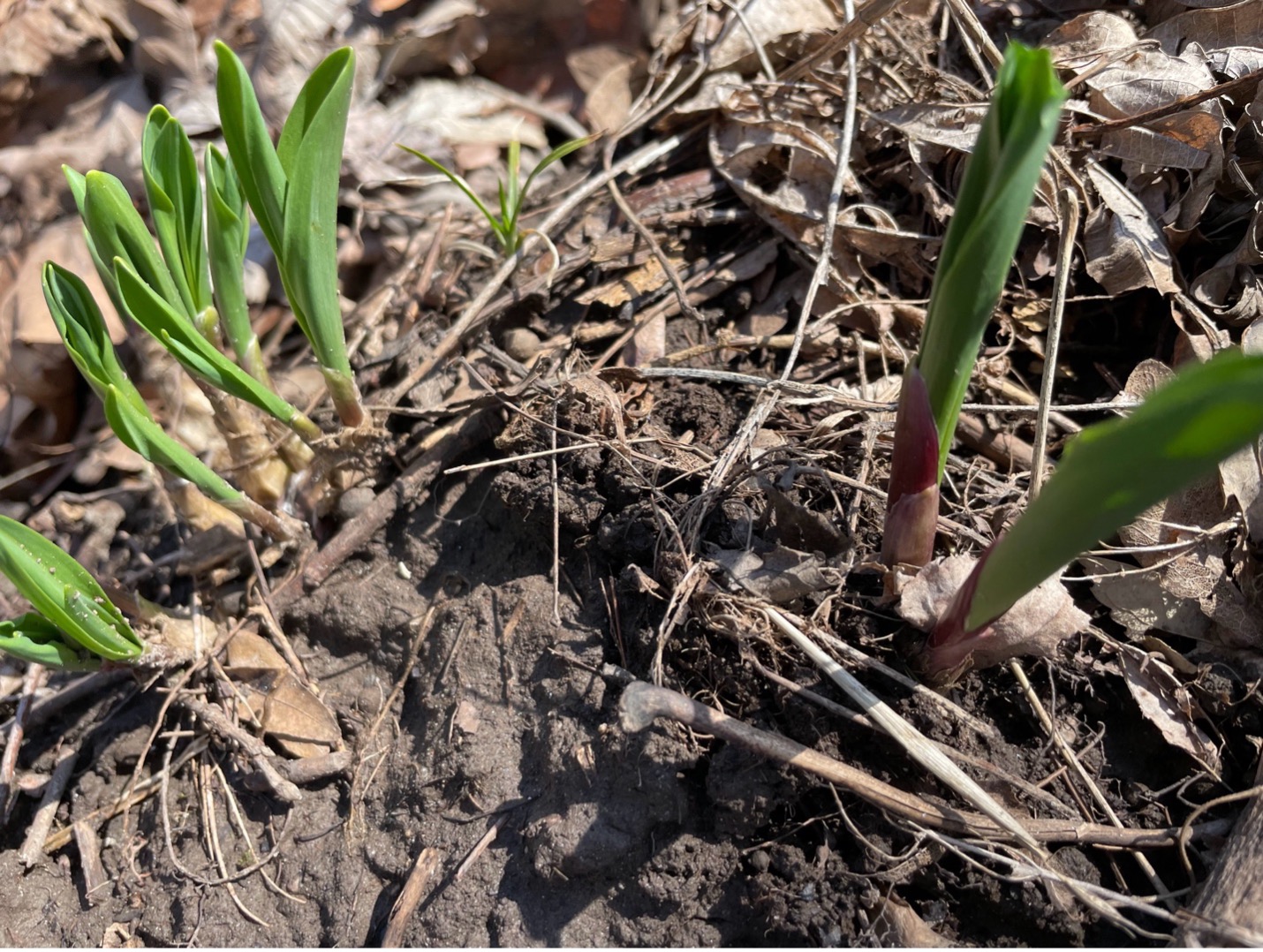Discover the Wild Leek (Ramps)
- Megan Christian

Learn how the influence of ramps has built relationships within human and nonhuman communities.
Part of the Allium (onion) family, Allium tricoccum, commonly referred to in English as Ramps or the Wild Leek, has been a staple of North American diets for centuries. Ramps can be found across northeastern America and Canada in the early spring under the leafless cover of deciduous trees. They are fond of moist, rich soils, often growing in large colonies across the forest floor, especially along rivers and ponds. This American native species has long been used as food and medicine by the First People of the area (Cherokee, Iroquois, Ojibwa, Menominee, and others), who revere it for its aromatic garlicky flavor, vitamin and mineral content, and use the allium for the treatment of a variety of ailments. Interestingly, the name of the city of Chicago was derived from the Ojibwa word for ramps, ‘shika’ko,’ due to their once bountiful growth in the region.
Ramps are slow-growing perennials, sometimes taking over five years to mature from seed to a significant size. They harvest a narrow window of sunlight, leafing out in the early spring once the ground has thawed but before the tree canopy has grown in and shaded out the understory. Still, they grow in such an abundance that they can be found carpeting the ground of forests and riverbanks, sometimes pushing up through late-spring snow.
Our good friends and the founders of Spence Farm in Fairbury, Illinois, Kris, Marty, and Will Travis, have much reason to appreciate the tenacious presence of ramps in Midwestern forests.

After purchasing their family’s multigenerational homestead/farm their goal was to transition from prior conventional land management to organic. But in the meantime, they looked for a way to make income from what the land was already offering.
Marty recalled how his grandfather would complain about the “problem” he had with an area in their woodlot that was “infested” with wild leeks. That’s when Marty saw the solution in the problem. The presence of ramps has historically been a reason for celebration. In the East, spring festivals are still held in honor of ramps, as they are one of the first nutrient-rich wild edibles to appear after a long winter. Upon investigation, Kris and Marty discovered that the ramps were still there!

Knowing this, the following spring, Kris and Marty harvested a load of ramps and ventured up to Chicago, visiting a dozen restaurants, door to door. They introduced themself and Spence farm, left each chef with a box of delicious ramps, and explained if they liked them and wanted more to give them a call and they would bring more the following week.
When almost every chef called back to place more orders the rush was on to harvest, clean, and deliver the ramps. The following season they were better prepared, hired some high school students, and sold over $20,000 worth of ramps. And due to careful harvesting practices, the massive population of these spring ephemerals quickly rebounded, and the following year, the area they harvested from looked untouched.
But the ramp had more of an impact on Spence Farm than providing early spring income. Now the Travis’ were in relationship with these Chicago chefs who wanted to know what else they had available directly off the farm that they could include on their menus. Soon, Marty and Kris were also bringing in lambsquarter, amaranth, and other abundantly growing edible “weeds” all of which were met with an overwhelmingly positive response. The value of this relationship between farmer and chef grew.

So, that autumn, Kris and Marty distributed seed catalogs to the chefs, offering to grow other vegetables they would like the following year. This idea proved brilliant. From heirloom variety vegetables to rare perennials, the demand for Spence’s produce grew. The Travis’ quickly realized they could not serve all of the requests, so they began to network with their surrounding small-scale farmer neighbors, distributing orders and creating direct markets for common and uncommon regeneratively grown foods. From the wild leeks, a cooperative of farmers was born. 15 years later, Stewards of the Land cooperative still thrives and now includes 25-farms in Illinois who supply food and flowers to over 2-dozen Chicago restaurants.

In addition to Spence Farms’ relationship with their community, the pungently aromatic ramp also plays an essential role in the ecological relationships of our temperate deciduous forests. At the time of the ramps’ most prolific growth, the ground is in quite an unstable state. After a winter of freezing and thawing, heavy spring rainfall threatens to wash away essential nutrients from vulnerable forest soils. Ramps help by quickly absorbing these nutrients and holding them in their leaves until they die back and are reunited with the soil. By this point, the heaviest of the spring rains have usually subsided, and as the ramp leaves break down, stored nutrients are released and made available to the trees and plants in their vicinity, just in time for spring growth spurts.

Due to their slow growth, responsible harvesting is essential for the continuation of ramps in North American forests. It is suggested only to take tender young leaves when harvesting, leaving the bulb intact. Some harvesters return to ramp patches once they have gone through their reproductive cycle and manually spread their seeds to support the population further. By using the gifts ramps provide while stewarding them with responsible practices, we can continue to enjoy and build relationships with them for centuries to come.
